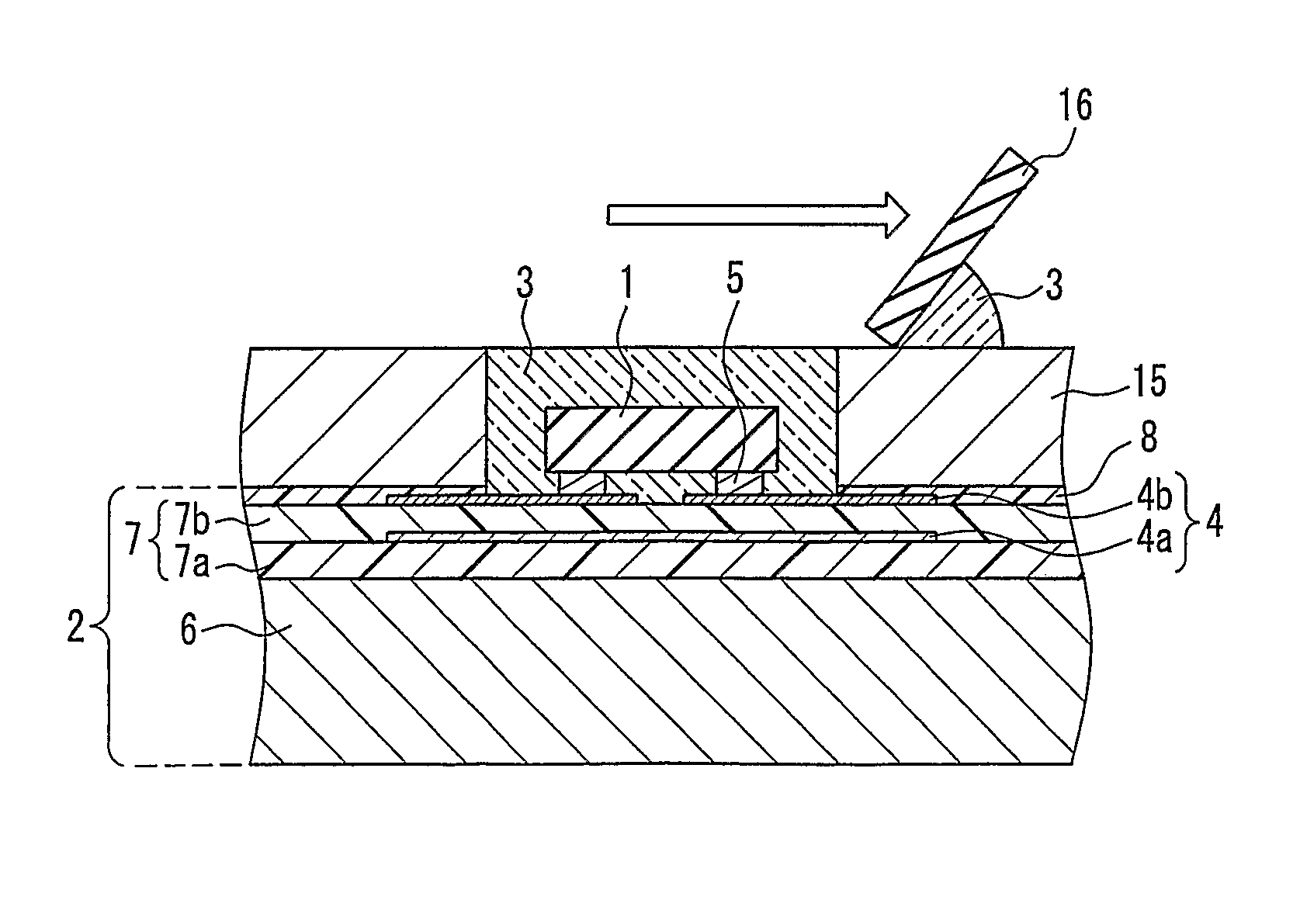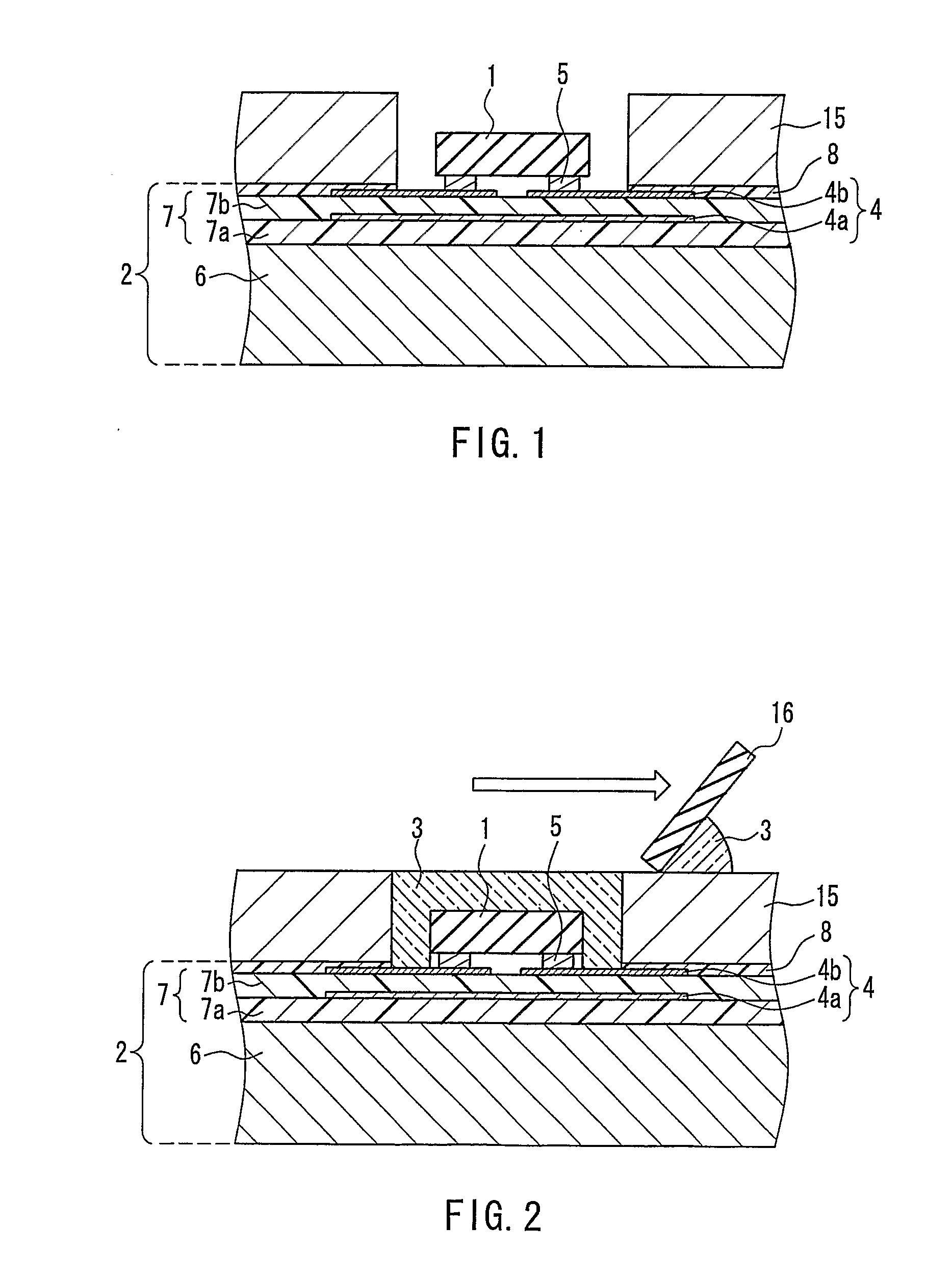Luminescent Light Source, Method for Manufacturing the Same, and Light-Emitting Apparatus
a technology of light-emitting elements and light-emitting tubes, which is applied in the manufacture of electric discharge tubes/lamps, luminescent screens, lighting and heating apparatus, etc. it can solve the problems of uneven chromaticity of output light, a gap is likely to form between the underfill and the phosphor layer, and the underfill is likely to be peeling at the interface therein, so as to reduce the cycle time and prevent peeling. , the effect of uniform thickness o
- Summary
- Abstract
- Description
- Claims
- Application Information
AI Technical Summary
Benefits of technology
Problems solved by technology
Method used
Image
Examples
example
[0096] In this example, as a light-emitting apparatus, a card type light emitting apparatus that has the same configuration as that of the light-emitting apparatus shown in FIGS. 12 and 13 and includes 64 LED bare chips was produced. Further, the light-emitting apparatus according to this example is configured by using a plurality of luminescent light sources of the same configuration as that of the luminescent light source shown in FIG. 5. Accordingly, reference can be made to FIG. 5 as a partial cross-sectional view for this example and to FIGS. 1 to 4 as partial cross-sectional views showing a manufacturing method according to this embodiment.
[0097] Initially, a substrate 2 was produced in the following manner. First, an epoxy resin containing an inorganic filler and copper foil (thickness: 10 μm) were laminated on a metal base 6 formed of an aluminum plate (size: 3 cm by 3 cm, thickness: 1 mm) and subjected to thermocompression to form an insulating layer 7a (thickness: 100 μm)...
PUM
 Login to View More
Login to View More Abstract
Description
Claims
Application Information
 Login to View More
Login to View More - R&D
- Intellectual Property
- Life Sciences
- Materials
- Tech Scout
- Unparalleled Data Quality
- Higher Quality Content
- 60% Fewer Hallucinations
Browse by: Latest US Patents, China's latest patents, Technical Efficacy Thesaurus, Application Domain, Technology Topic, Popular Technical Reports.
© 2025 PatSnap. All rights reserved.Legal|Privacy policy|Modern Slavery Act Transparency Statement|Sitemap|About US| Contact US: help@patsnap.com



